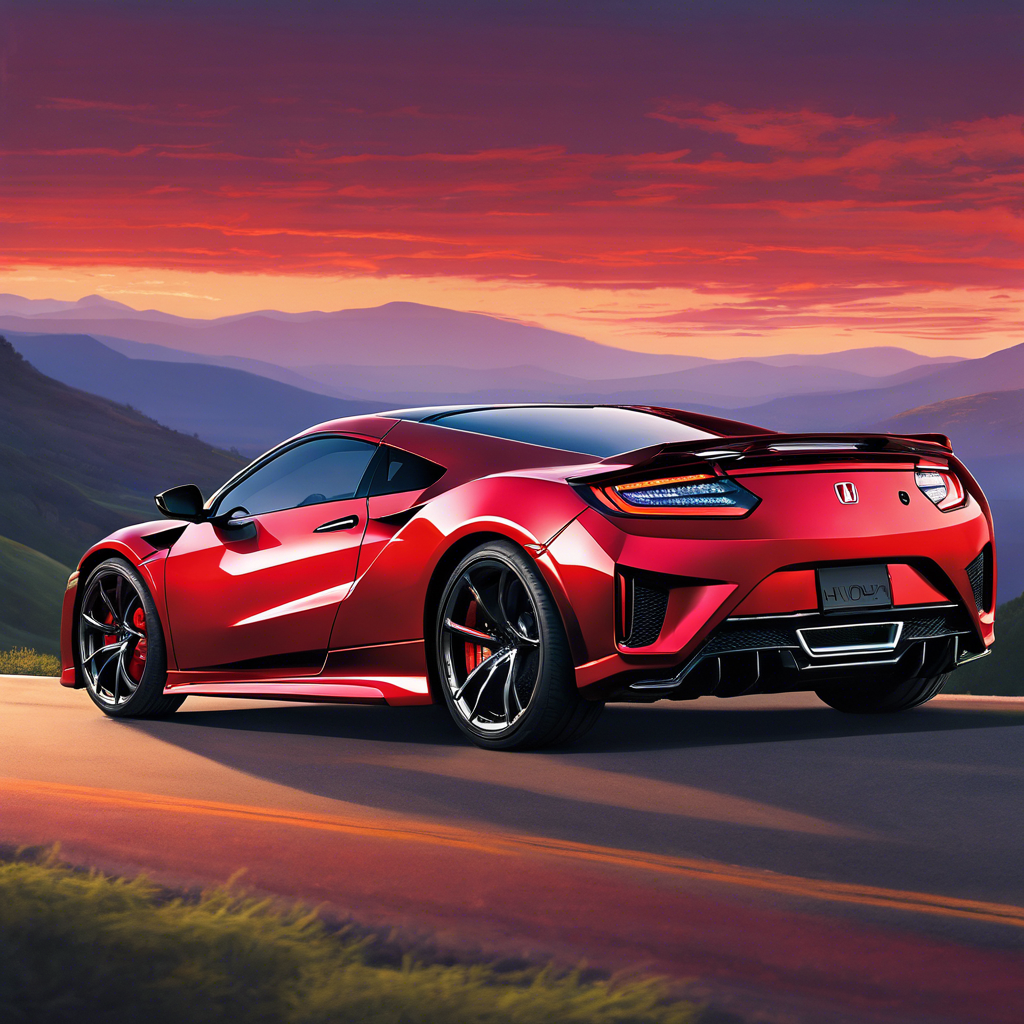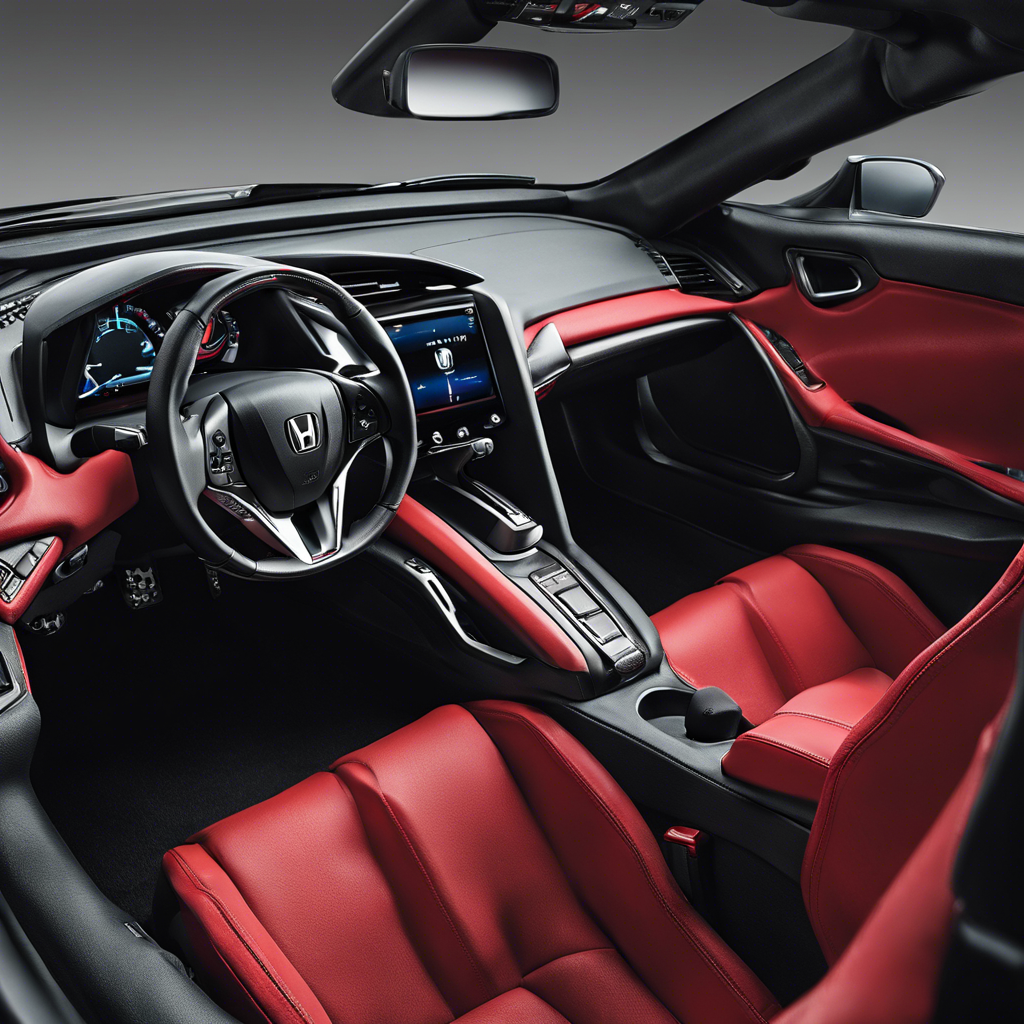The Honda NSX: A Masterpiece of Engineering and Performance
October 4, 2024

Introduction
Since its introduction to the automotive world in the late 1980s, the Honda NSX—known as the Acura NSX in North America—has carved out a niche for itself. Japanese engineering prowess is definitively illustrated by the NSX, which was developed with a single objective in mind: to provide an optimal blend of performance, luxury, and functionality. It separates itself from its peers due to its distinctive position as one of the first supercars to incorporate a mid-engine layout and its everyday drivability. In this blog post, we’ll take a comprehensive journey through the history, development, and impact of the Honda NSX, while also examining its technical specifications and what makes it a beloved icon among automotive enthusiasts.
Historical Context
The NSX’s narrative commences in the 1980s, a period in which European manufacturers dominated the supercar market. While cars like the Ferrari Testarossa and the Porsche 911 established status and performance, Honda aimed to democratize that experience. Soichiro Honda, who was the president of Honda at the time, was the driving force behind the vision to build a car with high-performance capabilities without sacrificing everyday usability.
In 1984, Honda’s development team, led by chief engineer Shigeru Uehara, undertook the project known as “Honda Pininfarina.” The aim was to combine Honda’s engineering excellence with Italian design flair. The collaboration culminated in a prototype that showcased a mid-engine layout and lightweight construction. Ultimately, the automobile was presented to the public at the 1989 Chicago Auto Show, and production commenced shortly thereafter.
First Generation (1989-2005)
The first-generation NSX made waves for its innovative features. It was the first production car to utilize an all-aluminum body, greatly reducing weight without compromising structural integrity. The NSX debuted with a 3.0-liter V6 engine, utilizing Honda’s VTEC (Variable Valve Timing and Lift Electronic Control) technology, which allowed for increased performance and efficiency. The engine produced 270 horsepower and could rocket from 0 to 60 mph in just over six seconds.
What set the NSX apart was not merely its power but its handling. The vehicle’s lightweight design, combined with a double-wishbone suspension system, provided an unprecedented level of responsiveness and agility in a supercar. This blend of performance and usability quickly garnered acclaim from both enthusiasts and critics alike.
Over its production run, the NSX underwent various updates. In 1991, the introduction of a more powerful 3.2-liter V6 resulted in an increase in power output to 290 horsepower. The NSX also earned a reputation for reliability, contrasting sharply with the reliability issues often associated with its European competitors.
The Legacy and Cultural Impact
The NSX rapidly became a cultural icon throughout the 1990s. It was featured in popular media, including movies like “Ferris Bueller’s Day Off” and the “Fast and Furious” franchise, further cementing its status as a poster car for automotive enthusiasts. Its combination of style, performance, and Honda’s reputation for quality made it a symbol of the “everyman supercar.”
Enthusiasts and collectors alike value the NSX for its unique blend of performance and accessibility. While traditionally, supercars were seen as impractical and often challenging to drive on a daily basis, the NSX broke that mold with its user-friendly characteristics. This approach to performance continued to appeal to a broad audience, contributing significantly to Honda’s reputation as a manufacturer of technologically advanced and reliable vehicles.
Second Generation (2016-Present)
After a decade-long hiatus, Honda reintroduced the NSX in 2016, now officially branded as the Acura NSX in North America. This second-generation model was a modern homage to its predecessor, incorporating the latest in performance technology and design aesthetics.
The 2.0-liter twin-turbocharged V6 engine, combined with three electric motors, forms a hybrid powertrain that delivers an astonishing 537 horsepower. Unlike the first generation, which was strictly a rear-wheel-drive vehicle, the new NSX features an all-wheel-drive system, allowing for improved traction and handling dynamics. The implementation of a nine-speed dual-clutch transmission enhances shifting performance, making the driving experience even more exhilarating.
The exterior design of the second-generation NSX maintains elements of its predecessor while adopting a more aggressive and contemporary look. A sculpted body, active aerodynamic components, and a bold front fascia signify that the NSX is a serious contender in the modern supercar landscape.
Performance and Technology

The NSX’s performance figures speak volumes about its engineering prowess. With a 0-60 mph time of approximately 3 seconds, the NSX competes with much more expensive supercars. In addition to increasing fuel efficiency, the hybrid system also contributes to power, which is an extraordinary accomplishment for a vehicle in this category. The NSX is equally at ease on the track as it is on city streets, thanks to its advanced Sport Hybrid Super Handling All-Wheel Drive system, which offers exceptional stability and grip.
The cabin is a testament to luxury and technology, with features that include a customizable digital dashboard, high-quality materials, and an advanced entertainment system. Attention to detail is evident, ensuring that the driving experience is not only thrilling but also refined.
Racing Heritage
Well-documented are the NSX’s racing origins. It participated in various racing events, including the Japanese Super GT Championship, where it garnered significant success. The NSX’s performance-oriented design philosophy is highlighted by its racing heritage, indicating its capability to excel on both road and track.
Conclusion
The Honda NSX stands as a landmark in automotive history, embodying innovation, performance, and practicality. It bridged the gap between supercars and everyday driving ability, redefining what enthusiasts could expect from a high-performance vehicle. With its unique blend of engineering finesse and usability, the NSX has continued to attract admirers and collectors.
As we look toward the future of automotive technology, the NSX remains a reminder of what is possible when passion and engineering excellence come together. Whether it’s the first generation that captured the imagination of car enthusiasts in the 1990s or the modern hybrid variant pushing the boundaries of performance today, the Honda NSX will forever be a symbol of what the spirit of motoring represents. As it transitions into an era of electrification and sustainability, one can only imagine how the NSX will evolve, but its legacy is undoubtedly secure, holding a cherished place in the annals of automotive history.